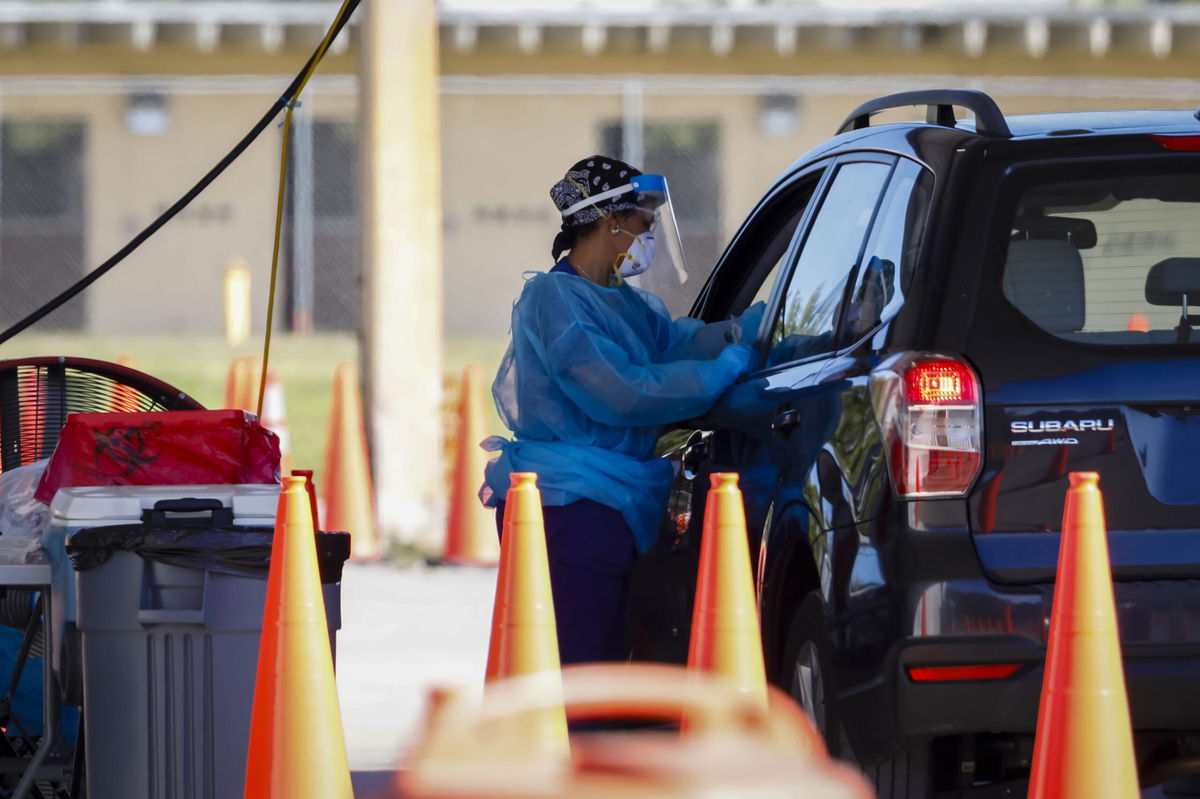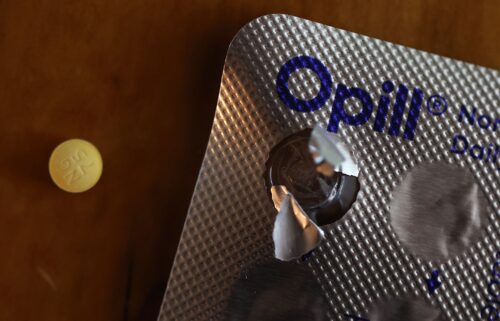Child hospitalization rates hit record highs as Omicron variant becomes prevalent

With Covid-19 tests hard to find in many parts of the country
By Travis Caldwell and Mallika Kallingal, CNN
Covid-19 hospitalization rates among children are soaring in the United States, with an average of 4.3 children under 5 per 100,000 hospitalized with an infection as of the week ending January 1, up from 2.6 children the previous week, according to data from the US Centers for Disease Control and Prevention.
This represents a 48% increase from the week ending December 4, and the largest increase in hospitalization rate this age group has seen over the course of the pandemic.
“For our youngest children, those who are not yet eligible for vaccination, it’s critically important that we surround them with people who are vaccinated to provide them protection,” CDC director Dr. Rochelle Walensky said Friday.
New hospital admissions for children under 18 with confirmed Covid-19 are already at a record level, at an average of 797 each day, according to data from the CDC and the US Department of Health and Human Services. This is the highest it has ever been, and it’s an 80% increase over the previous week.
“I would say the best way to keep those children protected is to vaccinate them as they’re eligible and surround them by siblings and parents who are vaccinated themselves,” Walensky said.
Over the course of the Covid-19 pandemic, close to 82,000 children have been hospitalized with Covid-19, according to most recent data from the CDC.
CDC updates prevention guidance in schools
Aligning with its latest quarantine and isolation recommendations, the CDC on Thursday updated guidance for Covid-19 prevention in K-12 schools.
Students, teachers and staff with Covid-19 should stay home and isolate away from others for at least five days, the guidance said. Day 0 is considered the first day of symptoms or the day of a positive viral test for people who do not have symptoms.
People whose symptoms are improving can leave isolation after five full days if they are fever-free for 24 hours, the CDC said. They should wear a mask around others for an additional five days.
Children who have been exposed to the coronavirus and have not been fully vaccinated should quarantine for at least five days after their last close contact with a person who has Covid-19, the guidance said. Adults who are not vaccinated against Covid-19 or who have not received a booster shot are also advised to follow this recommendation.
For the first time since July, the CDC will hold an independent telebriefing on the pandemic on Friday. The CDC usually participates in joint briefings with officials from the White House or the National Institutes of Health.
New proposal on how to live with the virus
A top health expert said in order to get to a place where the coronavirus is endemic like the flu, the US has to get to a situation where there are no big surges.
“We need many more people vaccinated in this case. We need additional therapies, not just the couple of oral therapies we currently have. We need to upgrade our air filtration system. We’ve got to get the prevalence down, and then we’ll be able to get to a new normal,” Dr. Ezekiel Emanuel, a former member of President Joe Biden’s Covid-19 advisory board, told CNN’s Anderson Cooper Friday.
Emanuel and other former members of Biden’s Transition Covid-19 Advisory Board wrote three pieces published this week in the medical journal JAMA on a “new normal” of living with the virus. They proposed a new plan and laid out strategies for testing, mitigation, vaccines and treatments.
He said one of the problems with the testing regimen is the country did not plan last summer to make sure the whole system was operating smoothly. “So, if we plan today, we won’t have a recurrence or shouldn’t have a recurrence of these shortages and things in the next few months,” Emanuel said.
He predicted two potential scenarios on how the pandemic can be handled.
“It’s possible, with Omicron, that we will get to a new normal towards the middle to the end of the year, but … we have to plan for various scenarios, including a pessimistic scenario where we have a new variant, a positive scenario where Omicron is the sort of last serious variant and it’s not going to be outcompeted, and we can get to the new normal much more rapidly,” Emanuel said.
With testing shortage, anyone with symptoms should assume they’re positive, doctor says
With Covid-19 tests hard to find in many parts of the country and the Omicron variant spreading rapidly, health experts are advising those with symptoms to isolate themselves if they even only suspect they have the virus.
And with the recent news rapid antigen tests may lag in detecting positive cases when compared to PCR tests, the best time to take a rapid test may be a day or two after symptoms arrive, epidemiologist Dr. Michael Mina said Thursday.
“The important thing is, when you feel symptoms, assume you’re positive at this point, especially with Omicron being so prevalent,” Mina said in an interview with telehealth company eMed, where he is chief science officer.
For those who take a rapid test and show a positive result after swabbing, yet the line shown is very faint, they may have an active infection and still be contagious, he said.
“Does it mean you’re going to walk into a room and be a superspreader? No. But does it mean that you should go to your 90-year-old grandmother and hug her? I would say no, I wouldn’t do that. I would not want to personally be sitting next to somebody who’s still positive in any way on these tests,” Mina said.
Health officials in Louisiana echoed the message Thursday as the state reported a record daily number of infections.
“When you’re in a surge like we are right now and Covid is everywhere — and it is everywhere right now — if you have trouble getting a test, a take-home test particularly, and you do have symptoms, the prudent thing to do is just assume you have Covid and isolate away from other people. That’s the safest thing to do right now,” state health officer and medical director Dr. Joseph Kanter said.
Leaders in multiple states are working to expand access to testing as a surge in demand paired with a lack of supply has led to numerous shortages.
In Minnesota, officials said a new testing site would be opened and 1.8 million rapid tests would be sent to schools. In Maryland, 20 additional testing locations will be set up outside hospitals to divert people from going to emergency rooms for Covid-19 tests.
Yet the buildup of testing has not been as smooth in every state. As many as 1 million unused rapid test kits expired in a Florida warehouse, a top state official said on Thursday.
The stockpile sat idle during the fall when cases fell in Florida and demand was low, Florida Department of Emergency Management Director Kevin Guthrie said, and the kits expired “before December 26 to December 30.”
Vaccinations remain critical, officials say
The National Guards in Ohio, New Hampshire and New Jersey announced plans to deploy members to assist hospitals and long-term care facilities facing shortages of workers, who face higher chances of exposure due to an influx of patients and must isolate after testing positive.
Widespread infections are also stretching other industries such as public safety departments. In Los Angeles, 505 police officers and 299 fire department employees are in quarantine at home as of Wednesday.
“These are big numbers, numbers that are reflecting the staffing challenges that we all face,” said Mayor Eric Garcetti.
“Our continued response time will see some delay in routine calls,” LAPD Chief Michel Moore said, but stressed 911 services are fully staffed.
Health experts stressed being vaccinated gives those infected the best opportunity to recover more quickly and avoid severe illness. Reports demonstrate those unvaccinated remain at higher risk.
In Maryland, “75% of the patients who are currently admitted in our hospitals with Covid-19 across the medical system are unvaccinated,” according to Dr. Mohan Suntha, president and CEO of the University of Maryland Medical System, and less than 5% of all patients who are hospitalized with Covid-19 are vaccinated and boosted.
Connecticut Gov. Ned Lamont said Thursday all long-term care staff and contract employees in the state will be required to get a Covid-19 booster by February 11 if eligible.
In addition, hospital employees will be mandated to get the booster, Connecticut Hospital Association Vice Chairman Patrick Charmel said. Officials expect all staff who need a booster to have one by early March.
Correction: An earlier version of this story misstated Dr. Michael Mina’s title. He is a chief science officer.
The-CNN-Wire
™ & © 2022 Cable News Network, Inc., a WarnerMedia Company. All rights reserved.
CNN’s Virginia Langmaid, John Bonifield, Naomi Thomas, Jamie Gumbrecht, Katherine Dillinger, Chris Boyette, Carma Hassan, Stella Chan, Amy Simonson, Steve Contorno and Taylor Romine contributed to this report.


